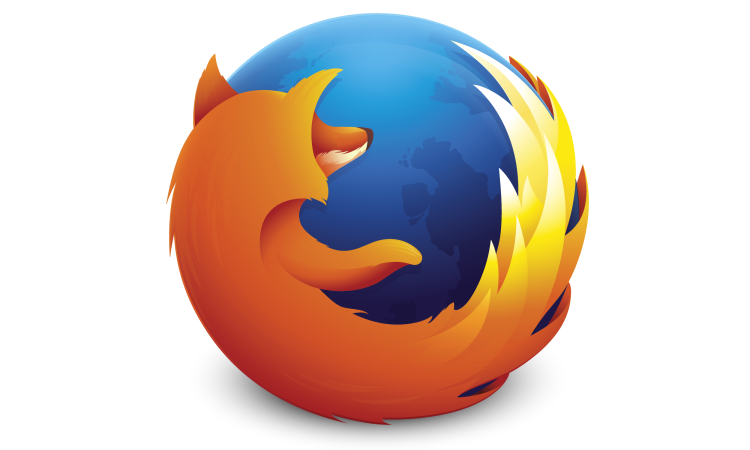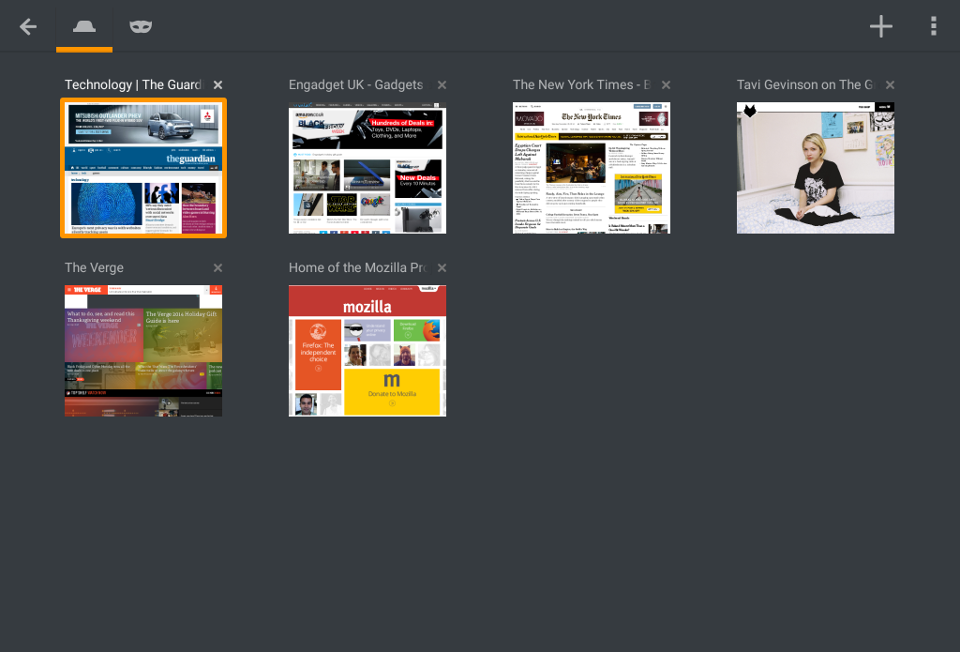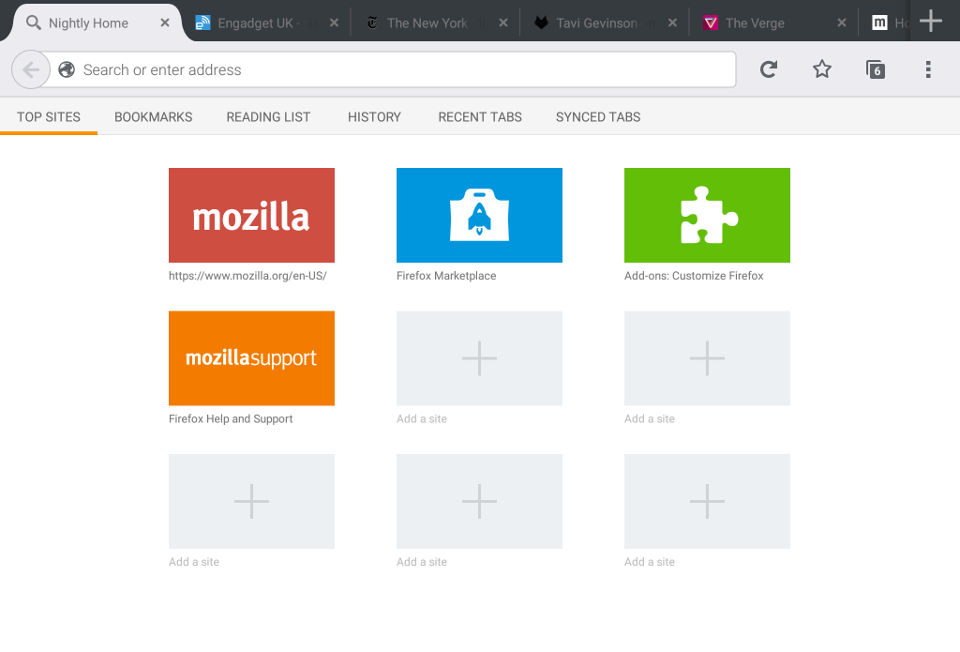Mozilla today launched Firefox 36 for Windows, Mac, Linux, and Android. Major additions to the browser include full HTTP/2 support and a new tablet user interface on Android.
Firefox 36 for the desktop is available for download now on Firefox.com, and all existing users should be able to upgrade to it automatically. As always, the Android version is trickling out slowly on Google Play.
Mozilla doesn’t break out the exact numbers for Firefox, though the company does say “half a billion people around the world” use the browser. In other words, it’s a major platform that web developers target — even in a world increasingly dominated by mobile apps.
The biggest news for the browser is undoubtedly HTTP/2 support, the roadmap for which Mozilla outlined just last week. Mozilla plans to keep various draft levels of HTTP/2, already in Firefox, for a few versions. These will be removed “sometime in the near future.”
HTTP is an application protocol that forms the foundation of data communication for the World Wide Web. Over the years, it has become dated, and there have been many initiatives to speed it up.
HTTP/2, the second major version of Hypertext Transfer Protocol (HTTP) and the biggest update in years, was finalized earlier this month. It is the first new version of the HTTP protocol since HTTP 1.1, which was standardized back in June 1999.
Desktop
On the desktop, Firefox 36 is not a major feature-filled release by any stretch. Still, it does have some notable additions and improvements.
Pinned tiles on the new tab page can now be synced, a minor change that will mainly be celebrated by hardcore Firefox users. Those interested in the security world will be happy to know that Firefox will no longer accept insecure RC4 ciphers “whenever possible” and that certificates with 1024-bit RSA keys are being phased out.
Here’s the full Firefox 36 changelog:
- New: Pinned tiles on the new tab page can be synced
- New: Support for the full HTTP/2 protocol. HTTP/2 enables a faster, more scalable, and more responsive web.
- New: Locale added: Uzbek (uz)
- Changed: -remote option removed
- Changed: No longer accept insecure RC4 ciphers whenever possible
- Changed: Phasing out Certificates with 1024-bit RSA Keys
- Changed: Shut down hangs will now show the crash reporter before exiting the program
- Changed: Add-on Compatibility
- HTML5: Support for the ECMAScript 6 Symbol data type added
- HTML5: unicode-range CSS descriptor implemented
- HTML5: CSSOM-View scroll behavior implemented allowing smooth scrolling of content without custom libraries
- HTML5: object-fit and object-position implemented.
Defines how and where the content of a replaced element is displayed - HTML5: isolation CSS property implemented.
Create a new stacking context to isolate groups of boxes to control which blend together - HTML5: CSS3 will-change property implemented.
Hints the browser of elements that will be modified. The browser will perform some performance optimization for these - HTML5: Changed JavaScript ‘const’ semantics to conform better to the ES6 specification.
The const declaration is now block-scoped and requires an initializer. It also can not be redeclared anymore. - HTML5: Improved ES6 generators for better performance
- Developer: Eval sources now appear in the Debugger
Debug JavaScript code that is evaluated dynamically, either as a string passed to eval() or as a string passed to the Function constructor - Developer: DOM Promises inspection
- Developer: Inspector: More paste options in markup view
- Fixed: CSS gradients work on premultiplied colors
- Fixed: Fix some unexpected logout from Facebook or Google after restart
- Fixed: Various security fixes
If you’re a Web developer, you may want to get more details at the Firefox 36 for developers page.
Android
Firefox 36 is arguably a bigger release on mobile than on the desktop, even though both are getting HTTP/2. That’s because the Android app has a brand new look on tablets.
Mozilla says its goal with this redesign was “to simplify the interaction with tabs and allow users to create, remove and switch tabs with a single tap.” The company has also revamped the toolbar and added a full-screen tab panel that is meant to give the user a visual overview of all open tabs.
If you’re not seeing the new Android version, don’t fret. We understand Mozilla is having some technical difficulties getting it out, but it is slated to arrive today.
Mozilla typically releases new Firefox versions every six weeks, but Firefox 37 is expected sooner than that: the end of March.




